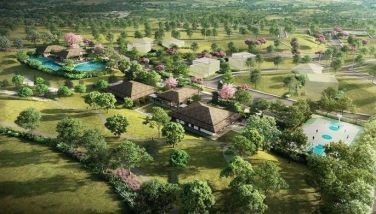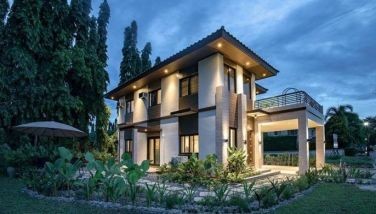Masonry: Adding value and beauty to homes
Early architects and builders, in the epic course of the “perfect” building system, employed masonry to erect many of the world’s architectural achievements including the pyramids of Egypt, the Great Wall of China, India’s Taj Mahal, the Colosseum in Rome and Greek temples. A timeless form of art, masonry construction has invariably brought forth countless structures through civilization.
Masonry work varies from laying a simple wall to installing an ornate exterior. Laid in and bound together by mortar, masonry units such as bricks, concrete blocks, tiles, terra-cottas and stones are frequently-used products by residential and high-rise developers.
Non-combustible material makes up masonry structures. They provide unmatched compressive strength, enforcing structures’ resistance against extreme weather phenomena. With no exterior wood on the walls, structures are also protected from rotting, mold and fungus, and wood-destroying termites.
The classic beauty of brick, tile and stone is perpetuated with masonry cement which is optimally-suited for masonry works—particularly wall plastering, hollow block filling, bricklaying, block and stone masonry applications, internal and external finishes including pebble dash and roughcast and floor toppings—where functionality meets style and flexibility.
Specially formulated to produce masonry mortar, this type of cement consists of a mixture of Portland cement or blended hydraulic cement and plasticizing materials like limestone together with an air-entraining agent. It is designed to meet the demands for easy-to-use and highly durable cement.
Finishing touches on walls bid lighter and more workable cement. The tedious task of cement masons to shape and finish concrete surfaces is challenged, most of the time, by the cement’s property to stay moist without constant watering, and to bond faster and stronger.
Committed to develop and market world-class and innovative products, CEMEX Philippines reintroduces new and improved CEMEX Palitada King, now made from 100 percent natural gypsum.
“Producing high quality cement requires the best quality raw material, and gypsum is one of the most important ingredients,” CEMEX Philippines marketing director Vince Lawrence Abejo says. “Based on our own research, mined natural gypsum performs better than synthetic gypsum which is a byproduct of fertilizers and power plants.”
Hassle-free plastering and higher area coverage, CEMEX Palitada King is a top brand of choice among contractors and builders because it is 8 to 10 percent cheaper than ordinary Portland cement and costs 20 percent less on labor and material expenditures compared to other cement brands. It has excellent board life, is lighter and more workable, and has reduced drying shrinkage—ensuring savings for contractors while assuring quality performance.
Virtually maintenance-free, masonry buildings do not rust, shatter, warp, dent, buckle or rot. With CEMEX’s enhanced masonry cement, masonry construction’s adaptability to various design forms and richness in texture add value and beauty to properties.
- Latest

























